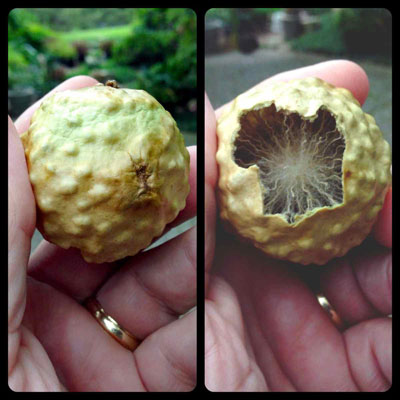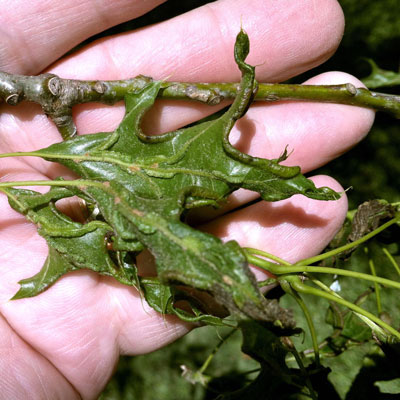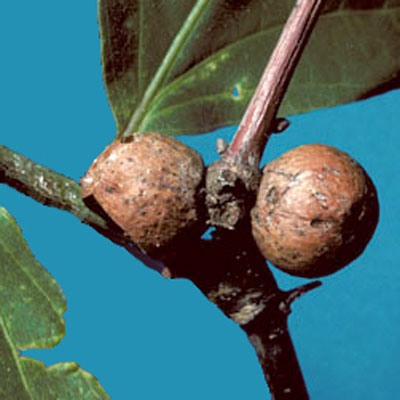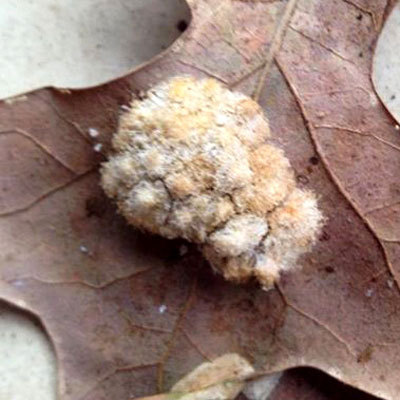Oak galls galore
If you’ve seen unusual things growing on your oak trees’ leaves or twigs, they’re probably galls. Entomologists tell us there are hundreds of types, and that each one of them is caused by a specific insect species that stings the plant tissue, lays her eggs and then moves on.
The larvae develop within the plant tissue, and when the time comes, the adults emerge, fly, mate and start the whole cycle over again. And what that says to us is that there isn’t much we can do about any of it, because the female is only there long enough to lay her eggs – she’s really not eating any part of the plant.
Further, the larvae are inside the plant where your spray isn’t going to be able to reach them. Perhaps a systemic insecticide might offer some help, but that’s not necessarily always the case. Since the galls don’t really hurt the plants, there’s really not much reason to get all worked up over any of this anyway. But I just thought you’d like to know.
So you’ll know what five common galls look like…

• Oak plum gall: This has been the year for these growths. Hardly a day has gone by without one or two people asking me to identify them. They form alongside acorns on Shumard red oaks, but we usually find them on the ground beneath the trees.

• Apple gall: These are also found in and around Shumard red oaks.
They can be as large as tennis balls, yet they weigh almost nothing. You’ll usually not notice them until they fall onto the ground.

• Vein pocket gall: You might think that someone sprayed your tree with broadleafed weedkiller, but unless that really did happen, vein pocket galls are a lot more likely. They will attack an entire branch, leaving the rest of the tree healthy and normal. The leaf margins look as if someone had crimped them with a can opener. Again, sprays don’t help at this point. All you can do is to wait it out.

• Woody oak gall: Looking like wooden marbles, these form on the twigs of live oaks. Wasps will hover around the trees as they lay eggs. I’ve never been bothered by the wasps, but I leave them alone and suggest you do the same. Spraying them would be futile.

• Wooly oak gall: These are pea-sized, but they may cluster together into clumps that resemble stinging asps. Unlike asps, however, these galls are immobile and harmless. You’ll find them on post oaks most commonly.
